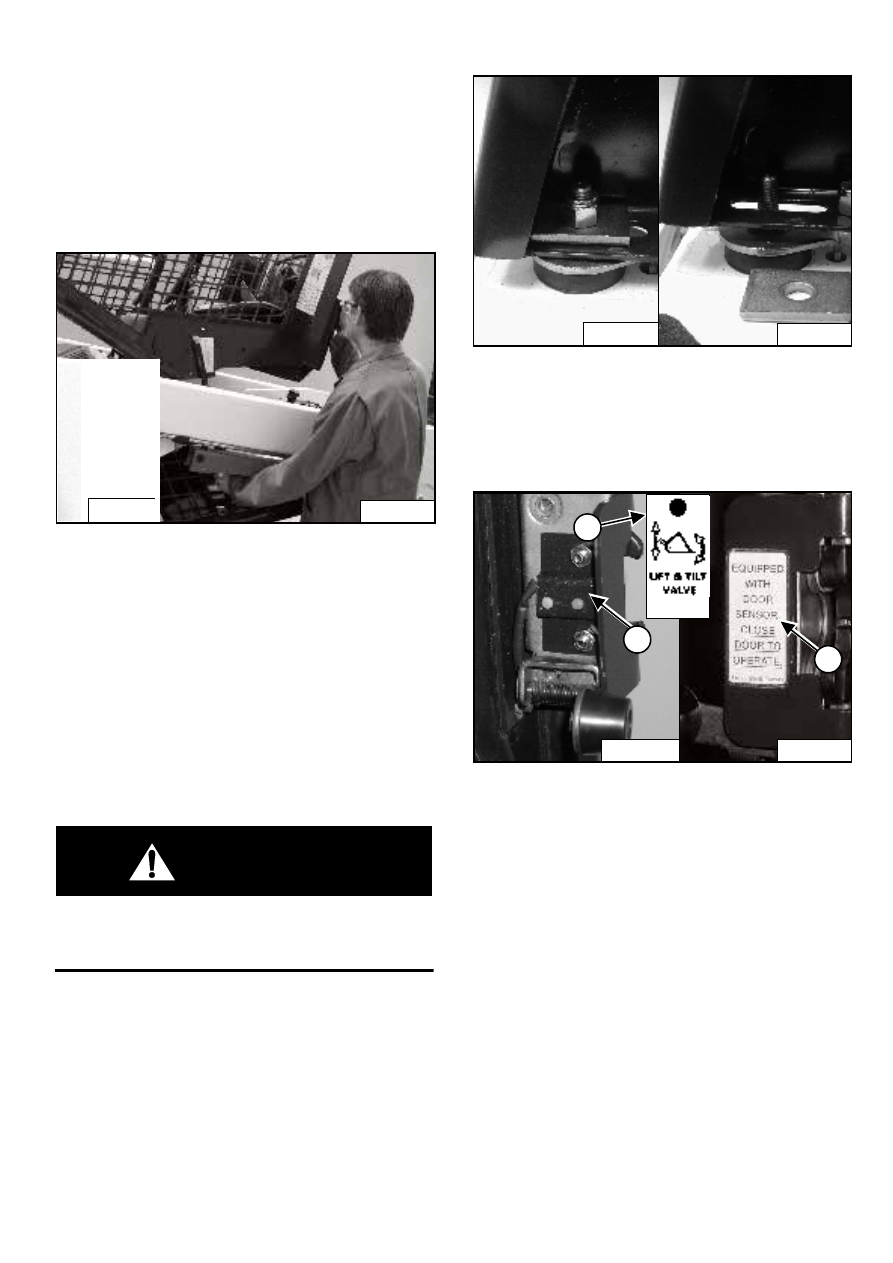Bobcat S150. Manual - part 18

S150 Bobcat Loader
57
Operation & Maintenance Manual
OPERATOR CAB (CONT’D)
Lowering The Operator Cab
Always stop the engine before raising or lowering the cab.
NOTE: Make sure the seat bar is fully raised or
lowered when lowering the cab. Always use
the grab handles to lower the cab.
Figure 109
Pull down on the bottom of the operator cab until it stops
at the latching mechanism [Figure 109].
NOTE: The weight of the cab increases when
equipped with options and accessories such
cab door, heater, air conditioning, etc. In
these cases, the cab may need to be raised
slightly from the latch to be able to release the
latch.
Support the cab and release the latching mechanism
(Inset) [Figure 109]. Remove your hand from latching
mechanism when the cab is past the latch stop. Use both
hands to lower the cab all the way.
WARNING
PINCH POINT CAN CAUSE INJURY
Remove your hand from the latching mechanism
when the cab is past the latch stop.
W-2458-0103
Figure 110
Install the plates and nuts (both sides) [Figure 110].
Tighten the nuts to 54-68 Nm torque.
Cab Door Sensor
Figure 111
The cab door (option) has a sensor (1) [Figure 111]
installed which deactivates the lift and tilt valves when the
door is open.
A decal is located on the latch mechanism (2)
[Figure 111].
The LIFT & TILT VALVE light (3) [Figure 111] will be ON
when the door is closed and the PRESS TO OPERATE
LOADER Button is pressed.
P-45262
N-20120
P-31289
P-31288
P-34171
1
P-31202
3
2
B-15551j